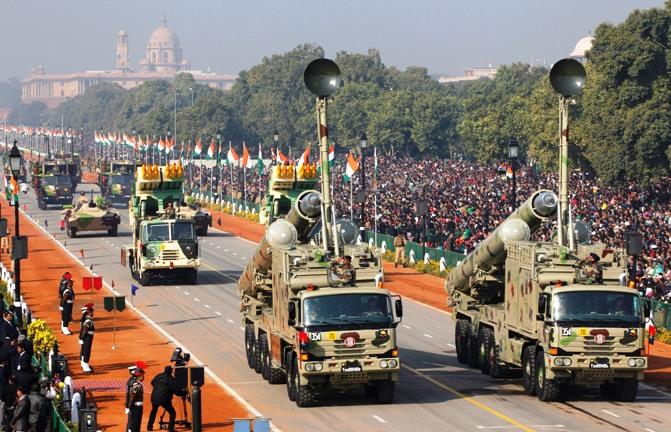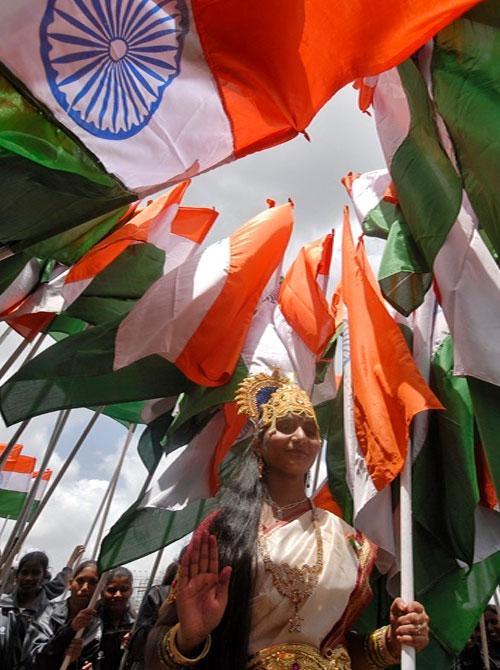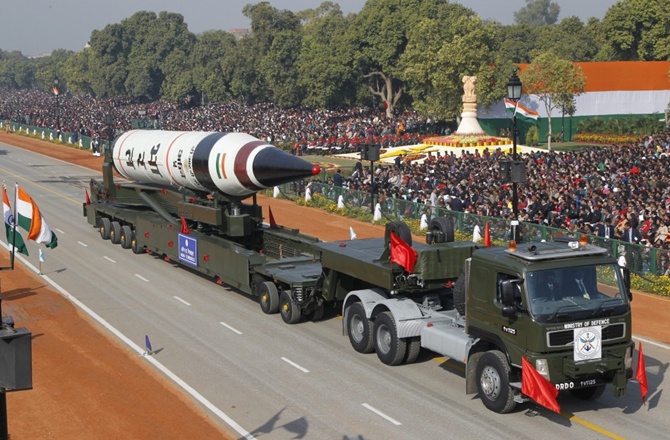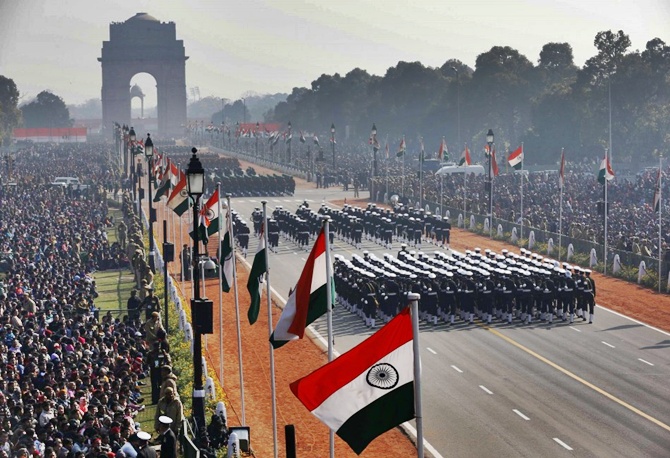
Beneath the bland 10 per cent rise in defence allocations in the interim Budget presented in Parliament on February 17 is the uncomfortable reality that Indian defence spending will touch a 52-year low in 2014-15, in terms of percentage of gross domestic product --1.74 per cent of GDP this year, and 12.7 per cent of government spending.
The last time defence allocation was lower was 1962, when the military got 1.5 per cent of the GDP, in keeping with the trend through the 1950s.
The Chinese attack in October 1962 led to emergency imports, raising defence expenditure to 2.32 per cent that year.
Since then, this year’s allocation is the lowest.
Meanwhile, the US and Russia spend around four per cent of GDP on their militaries, the UK and France spend 2.3 to 2.5 per cent, Pakistan spends close to three per cent, and China declares an expenditure of slightly over two per cent, but is believed to actually spend three per cent if hidden funding is included.
. . .

Ironically, India’s spending cut coincides with an effort to boost capability on the China border.
But while the army’s modernisation budget has almost doubled, the Indian Air Force, traditionally the biggest spender on modernisation, has seen funding slashed, endangering its multi-billion-dollar plan to purchase 126 French Rafale medium multi-role combat aircraft.
The army, raising a mountain strike corps for the Himalayan border, has received enhanced revenue funding for recruiting and salaries for some 80,000 additional soldiers.
Simultaneously its capital budget will rise, from Rs 10,749 crore (Rs 107.49 billion) this year to Rs 20,661 crore (Rs 206.61 billion) in 2014-15, for buying weaponry to equip the new corps, including rifles, machine guns, artillery, helicopters and communications equipment.
. . .

The Cabinet had cleared Rs 64,000 crore (Rs 640 billion) for this, which will be required over the coming eight years.
The army has gained at the cost of the equipment-intensive IAF.
While the IAF has again been given the lion’s share of the capital budget, its allocation has been trimmed to Rs 31,818 crore (Rs 318.18 billion), Rs 4,199 crore (Rs 41.99 billion) less than the current year’s modernisation budget.
This will pose serious problems for the IAF’s drive to seal the Rafale contract with Dassault. With the contract value is estimated at $16-20 billion, the IAF would have to pay Rs 10,000-15,000 crore (Rs 100-150 billion) as advance while signing the contract.
Given the IAF’s pre-committed capital expenditure, that is, instalments on equipment bought during preceding years, this year’s reduced budget will make it difficult to fund such a massive payout.
. . .

Meanwhile, the IAF’s burden of pre-committed payments has reduced somewhat after the ministry of defence’s termination of the Rs 4,650-crore (Rs 46.5-billion) contract with AgustaWestland for VVIP helicopters, following corruption allegations.
But heavy instalments will continue for several years from the Rs 26,000-crore (Rs 260-billion) purchase of ten C-17 Globemaster III transport aircraft; the Rs 6,000-crore (Rs 60-billion) purchase of six C-130J Super Hercules transports.
The IAF also faces difficult choices between a host of impending purchases; besides the Rafale, contracts are also impending for 22 AH-64 Apache attack helicopters and 12 CH-47F Chinook multi-mission helicopters, together worth some Rs 12,000 crore (Rs 120 billion); a Rs 15,000-18,000-crore (Rs 150-180-billion) deal for new Honeywell engines for the IAF’s Jaguar strike aircraft; and the ongoing purchase of Sukhoi-30MKI and Tejas Mark I fighters that are being built and supplied by Hindustan Aeronautics Ltd.
. . .

Of the overall defence budget, the army will get about half (see chart); the IAF will get a little short of a quarter, while the navy’s share reduces marginally to 15.6 per cent.
The two smaller services remain far better modernisers than the army.
Both spend about two-thirds of their money on new equipment (capital expenditure).
The army, which remains a manpower-intensive, low technology force, uses less than a fifth of its budget for modernisation.
Defence Minister A K Antony has not backed his frequent public exhortations for indigenisation with money.
The Defence Research and Development Organisation, which has long argued for at least seven per cent of the budget to boost indigenisation, will get its customary five per cent. About half of that will be used for actual research and development.
The defence allocations starkly highlight the marginal role of tri-service jointmanship.
A token Rs 2,418 crore (Rs 24.18 billion), one per cent of the defence budget, is allocated for tri-service organisations like the headquarters of the integrated defence staff and the Andaman & Nicobar Command.
India’s only tri-service operational command, based in Port Blair, remains an outpost that is noticed more by southeast Asian countries than by New Delhi.